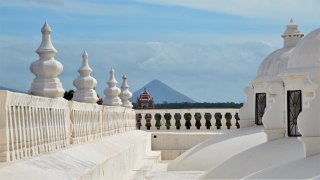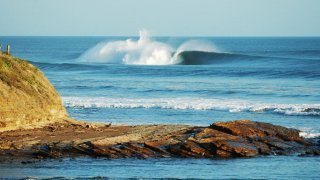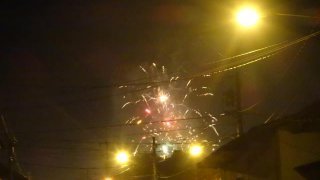Importance of Rio San Juan in the Nicaragua's History
Designated by the term “el desaguadero”, the “dragger”, by the Spaniards, the San Juan River was revealed to the conquistadores in 1525. Its importance and strategic position was obvious. It was then much easier to control the coming and going between Lake Nicaragua and the Atlantic Ocean. It took about fifteen years to discover the mouth of the river in the ocean but finally expeditions succeeded in this challenge.
The Rio San Juan is an incredible hub between the province of Nicaragua and the whole Spanish territory. Important commercial exchanges and various other connections took place between Granada and Havana, Granada and Cartagena.
In the era of the great successes of piracy in the Caribbean, the Rio was known by the strong presence of pirates and buccaneers, often pursued by privateers or other royal navies of the time. Some buccaneers and famous sailors made many incursions by the river. Morgan, Morris or François l’Olonnais were certainly able to penetrate and plunder certain Spanish territories, but they were very often pushed back, rather easily, by the defense of the colonists who had built forts and by the complication of navigating on the river. When the pirate incursions managed to pass through, it was assured looting in the city of Granada, and sometimes even of León, further north. Looting of goods and war treasures, but also enslavement of the inhabitants taken prisoner. In order to defend and protect the Rio area, a dozen fortifications were built, the largest, El Castillo, can still be seen today.
Until the last century, many conflicts were caused by the conquest and control of the rio San Juan, political and commercial conflicts, but also muscular exchanges between certain parties, between natives and settlers, between settlers, between owners of timber and banana plantations, etc. Between piracy and indigenous Miskitos conflicts, the region has seen the colors of many flags pass by, especially the American flag.
During the years of conflicts between the Spanish and English crowns, an Anglo-Indigenous alliance tried to take place on the mouth, the fort of El Castillo had lost its garrison chief, legend has it that it was his daughter, Rafaela, who organized the defense against the invasion, successfully! Later, the famous British sailor Nelson also rubbed shoulders during a long battle of about twenty days, without victory. Illness and poor resupply of the fort and the invading bellicose column had decimated both the invaders and the defenders.
Until the last century, the Rio San Juan has been a center of interest for the main European countries occupying the central American territory. In Nicaragua, as in the region of San Juan, the country and the natives did not escape the Spanish invasion and the associated conflicts, piracy and smuggling… To the point of almost falling into oblivion.
El Castillo
The small picturesque village of El Castillo is located about 2 hours by panga on the San Juan River from the city of San Carlos. There are no roads but there are paths and docks along the river.
The small, quiet town bears the historical name of the Castillo fortress, built by the Spaniards to defend this natural “hub” against the various invasions of pirates and freebooters. Its ruins are more than 300 years old and are still visible.
It was a general gunner of the Spanish army who recommended its construction. In 1671, from Guatemala, the Spanish authorities quickly gave the order to begin construction in this hostile environment. Situated on a small elevation on the banks of the river, its position is strategic and privileged for the construction of a surveillance and defense post. The locals gave the name “Raudal del diablo” to this new construction, in the classic warrior and defensive style of the time. The Spaniards responded kindly by baptizing it sacrally “Castillo de la Pura y limpia concepción”, in the name of the holy virgin, the evangelization of the region was then underway.
It was a real meeting point, a hub and a “road” node, the traditional trade routes soon turned towards the rio San Juan, as seen above, especially during the gold fever, in the middle of the 19th century, long after the arrival of the settlers. The fort and the castillo were defended many times against English troops and freebooters or other conquering nationalities present in the region. The very famous English Captain Nelson, hero of Trafalgar, also passed through here and the smell of gunpowder floated for a few days. Until the hand-to-hand combat, he ended up conquering the Spanish fortress. He did not stay there for long, these men and the troop suffered from the climate and diseases.
El Castillo then gently fell into the abandonment and anonymity of the names of places lost or destroyed during the golden century of the continent, el siglo del oro del asesino. The veins of Central America were wide open, El Castillo was then only a trace quickly erased by the inauguration of the Panama Canal and the establishment of the railway in Nicaragua.
What to do in and around El Castillo?
El Castillo is an attractive site for Nature lovers with its access to rivers and nature reserves. You can rest there while living an incredible experience in the middle of Nature and out of time through the following excursions :
- visit the fortress of El Castillo, where you can appreciate the architecture of this ancient military building and imagine the epic battles that took place there
- observation of the many birds and animals living on the riverside
- lunch a good grilled fish on the riverside in the small village of Sabálos
- hike in the biological reserve Indio Maiz to discover its jungle and its “inhabitants” (read below)
Biological Reserve Indio Maíz
The Indio Maíz Biological Reserve is considered one of the largest, over 3,000 km2, and most preserved nature reserves in Nicaragua. It is the heart of the fauna and flora of the country and the region. Among the hundred species of birds and other winged animals, including toucans, large mammals such as pumas and jaguars (yes!), we are fortunate to have three of the most beautiful species of monkeys present in the area: the congo monkey, the white-faced monkey and the spider monkey.The witness and guarantor of the preservation of this space is the Nicaraguan state, which to protect it prohibits the access to the biggest part of the reserve but allows the visit on a defined territory big enough to allow us to discover all its wonders.
How to get there?
The villages on the banks of the Rio San Juan as well as the Indio Maiz Biological Reserve are exclusively accessible by sea from San Carlos.
You will have the choice to travel on board a private or public lancha. The second choice being less expensive than the first one.



















